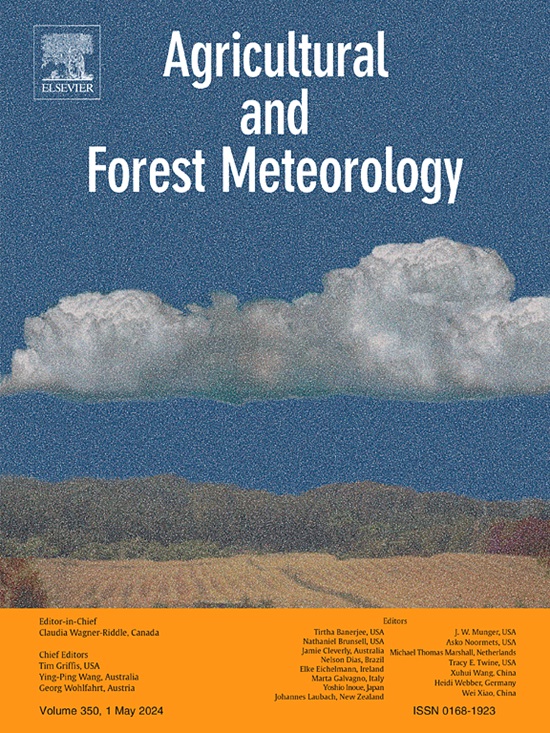Using high penetration airborne LiDAR and dense UAV scanning to produce accurate 3D maps of light availability in dense tropical forest
IF 5.6
1区 农林科学
Q1 AGRONOMY
引用次数: 0
Abstract
LiDAR makes it possible to describe the 3D structure of the forest, from which species habitats can be accurately estimated, over large areas at fine resolution. However, standard airborne laser scanning (ALS) fails to describe the lower canopy in sufficient detail due to occlusion by the upper canopy. The understory is important to characterise as it harbours the majority of the forest community and is the place where regeneration takes place. Here we explored the potential of low altitude high power ALS with enhanced penetration, and denser UAV LiDAR (Unmanned Aerial Vehicle) to describe the structure of the understory. We used the recorded laser pulse extinction to build a 3D model of light transmission through the canopy. We evaluated the capacity of the light transmission model to estimate the spatial and angular variation of light in the tropical understory, considering different leaf inclination distribution functions (LIDF), compared with measurements from two different field sensors. We found that (i) LiDAR can be used to estimate the light environment in the understory in a spatially and angularly consistent way; (ii) high pulse density does not guarantee an accurate characterization of the forest structure, and penetration rate is an important characteristic to accurately describe the forest structure, especially the understory; (iii) taking into account the anisotropic nature of light transmittance improved the estimation of absolute light levels by radiative transfer.


利用高穿透性机载激光雷达和密集的无人机扫描,在茂密的热带森林中产生精确的光可用性3D地图
激光雷达使描述森林的三维结构成为可能,从中可以准确地估计物种栖息地,在大范围内以精细的分辨率。然而,由于上冠层遮挡,标准机载激光扫描(ALS)无法足够详细地描述下冠层。林下植被是重要的特征,因为它容纳了大部分的森林群落,是发生更新的地方。在这里,我们探索了具有增强穿透性的低空高功率ALS和更密集的无人机激光雷达(UAV LiDAR)来描述林下植被结构的潜力。我们使用记录的激光脉冲消光来建立光通过树冠的3D模型。在考虑不同叶片倾角分布函数(LIDF)的情况下,我们比较了两种不同野外传感器的测量结果,评估了光透射模型估算热带林下植被中光的空间和角度变化的能力。研究发现:(1)激光雷达能够在空间和角度上保持一致地估算林下光环境;(2)高脉冲密度不能保证准确描述森林结构,而穿透率是准确描述森林结构尤其是林下植被的重要特征;(iii)考虑到透光率的各向异性,改进了通过辐射转移对绝对光照水平的估计。
本文章由计算机程序翻译,如有差异,请以英文原文为准。
求助全文
约1分钟内获得全文
求助全文
来源期刊
CiteScore
10.30
自引率
9.70%
发文量
415
审稿时长
69 days
期刊介绍:
Agricultural and Forest Meteorology is an international journal for the publication of original articles and reviews on the inter-relationship between meteorology, agriculture, forestry, and natural ecosystems. Emphasis is on basic and applied scientific research relevant to practical problems in the field of plant and soil sciences, ecology and biogeochemistry as affected by weather as well as climate variability and change. Theoretical models should be tested against experimental data. Articles must appeal to an international audience. Special issues devoted to single topics are also published.
Typical topics include canopy micrometeorology (e.g. canopy radiation transfer, turbulence near the ground, evapotranspiration, energy balance, fluxes of trace gases), micrometeorological instrumentation (e.g., sensors for trace gases, flux measurement instruments, radiation measurement techniques), aerobiology (e.g. the dispersion of pollen, spores, insects and pesticides), biometeorology (e.g. the effect of weather and climate on plant distribution, crop yield, water-use efficiency, and plant phenology), forest-fire/weather interactions, and feedbacks from vegetation to weather and the climate system.

 求助内容:
求助内容: 应助结果提醒方式:
应助结果提醒方式:


